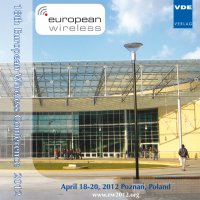Quantified User Behavior in User-in-the-Loop Spatially and Demand Controlled Cellular Systems
Conference: European Wireless 2012 - 18th European Wireless Conference 2012
04/18/2012 - 04/20/2012 at Poznan, Poland
Proceedings: European Wireless 2012
Pages: 8Language: englishTyp: PDF
Authors:
Schoenen, Rainer (Communication Networks (ComNets), Faculty 6, RWTH Aachen University, Germany)
Bulu, Gurhan (Department of Electrical & Electronics Engineering, Hacettepe University, Turkey)
Mirtaheri, Amir; Beitelmal, Tamer; Yanikomeroglu, Halim (Department of Systems and Computer Engineering, Carleton University, Ottawa, Ontario, Canada)
Abstract:
User-centric services are a growing concern. While the digital society definitely needs better quality-of-experience (QoE) for the user, his applications on smart mobile devices will continue to raise traffic in mobile radio networks by 100% per annum. Future generations of access technologies are challenged by this and the old over provisioning approach will not hold anymore, especially during busy hours. Congestion will happen more and more often, leading to a much worse QoE for everyone involved. Increasing the supply side by better spectral efficiency of 5G radio networks cannot work on its own, if demand is increasing faster than supply. The new User-in-the-loop (UIL) approach targets at convincing the user to participate actively in improving a common utility, instead of assuming an unconstrained traffic and homogeneous user density in a cell area. UIL can shape the demand at the user, either in space or time. Incentives are used to motivate changing location to a place of better spectral efficiency. Dynamic tariffs are one way for shifting demand out of the busy hours. We call this the smart grid of communications. This paper provides models for the user behavior based on survey results. It is the first work to answer the questions about what incentive will lead to what user reaction. Thus we are now able to quantitatively describe the user block in a system theoretic framework. Results indicate that shaping the user behavior works well and the analysis of simulation results prove the significant gains achievable with UIL.


